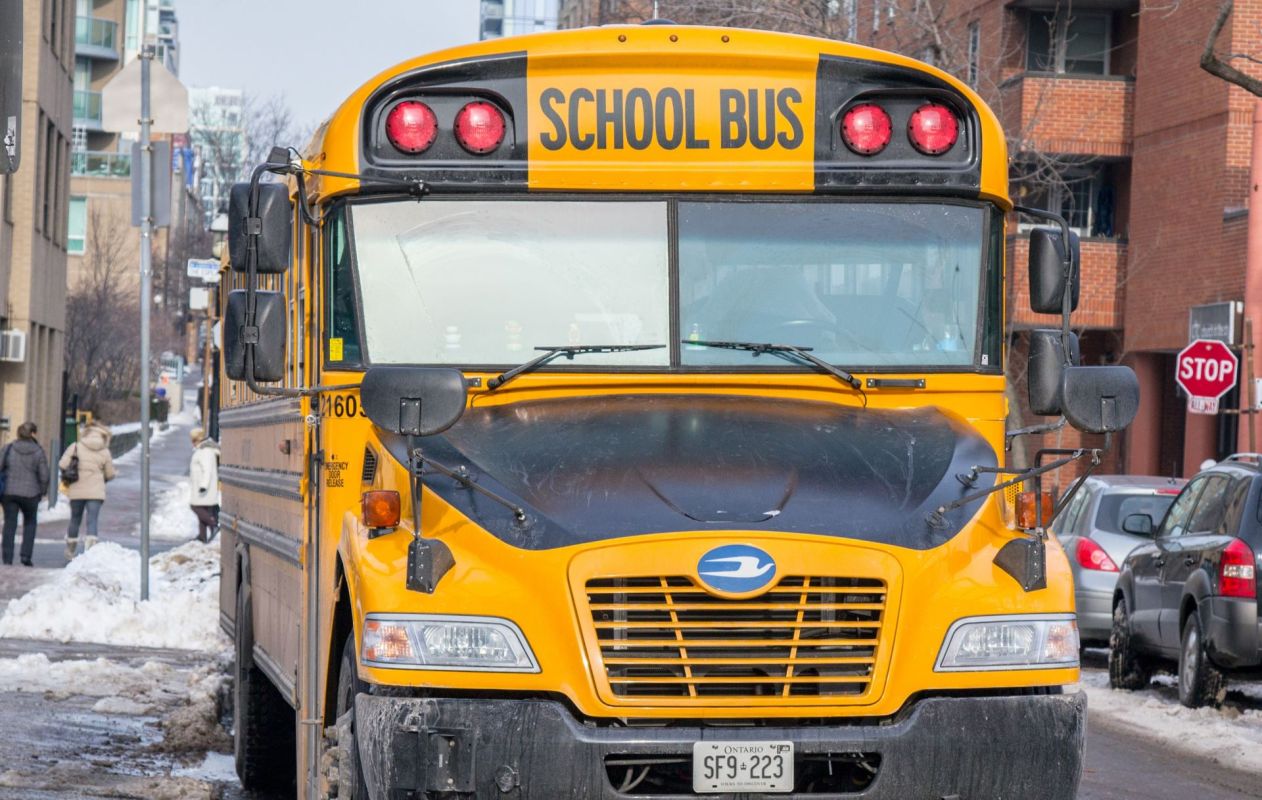The company behind America's iconic yellow school buses is paving the way toward a greener commute for students by opening a new facility equipped to build 5,000 electric school buses annually.
Blue Bird, a bus manufacturing company founded in 1927, has built a 40,000-square-foot "Electric Vehicle Build-Up Center" in Fort Valley, Georgia. After making traditional, mostly diesel school buses for 96 years, the company has decided to switch gears and add electric buses to its fleet.
"Based on the historic Bipartisan Infrastructure Law alone we anticipate thousands of additional electric school bus orders valued at an estimated $1 billion over five years," Phil Horlock, the president and CEO of Blue Bird Corporation, told The Verge. "Our new EV Build-up Center reflects Blue Bird's steadfast commitment to school districts across the U.S. and Canada to meet increasing demand and deliver clean, safe, and reliable student transportation when they need it."
Blue Bird's new facility can build four buses per day, but the company plans to increase production to 20 daily, Electrek reported. By ramping up electric rather than gas-powered bus manufacturing, the company will address two problems: air pollution and students' respiratory health.
Diesel school buses create more than 5 million tons of heat-trapping gases every year, per TIME magazine. Reducing our reliance on diesel buses in favor of electric vehicles (EVs) can significantly reduce air pollution.
Over 25 million American children rely on buses to get to school every day, and they are exposed to harmful diesel exhaust along the way. Children are more susceptible to respiratory issues when exposed to particles from diesel engines.
Researchers have found this exposure endangers respiratory health, increases absences, and lowers test scores.
One study found that districts with upgraded buses using cleaner energy had better attendance, with an estimated 350,000 additional student days of attendance annually. By applying these results to the rest of the nation, researchers predicted an additional 1.3 million attendance days.
While the automotive industry has struggled to equip large vehicles with electric engines, school buses are ideal candidates for electrification. Buses have short, fixed routes on most days with long inactive periods in the middle of the day and overnight for charging.
Blue Bird's classic models, Vision and All American, will receive electrified makeovers. Vision Type C buses can carry 77 passengers, and All American Type D buses with flat front ends can seat 84 people. Both will be equipped with 155 kilowatt-hours of energy, equating roughly to a 120-mile range, Electrek reported.
Adapting classic models means students will ride the same buses without the clouds of smelly exhaust.
With billions of dollars in government funding available under the Biden administration's Bipartisan Infrastructure Law, it has never been easier (or cheaper) for districts to buy fleets of electric buses.
The Clean School Bus Program allocated nearly $1 billion to cleaner school buses and charging stations in its first round of funding in 2022 — and more funding is on the way.
Blue Bird has projected it will sell thousands of school buses in the next five years, totaling $1 billion in orders, per Electrek. And with the EPA's regulations predicting that half of America's school buses will be electric by 2032, Blue Bird's new facility will be a key player in creating a clean and healthy environment for generations to come.
Join our free newsletter for weekly updates on the coolest innovations improving our lives and saving our planet.









